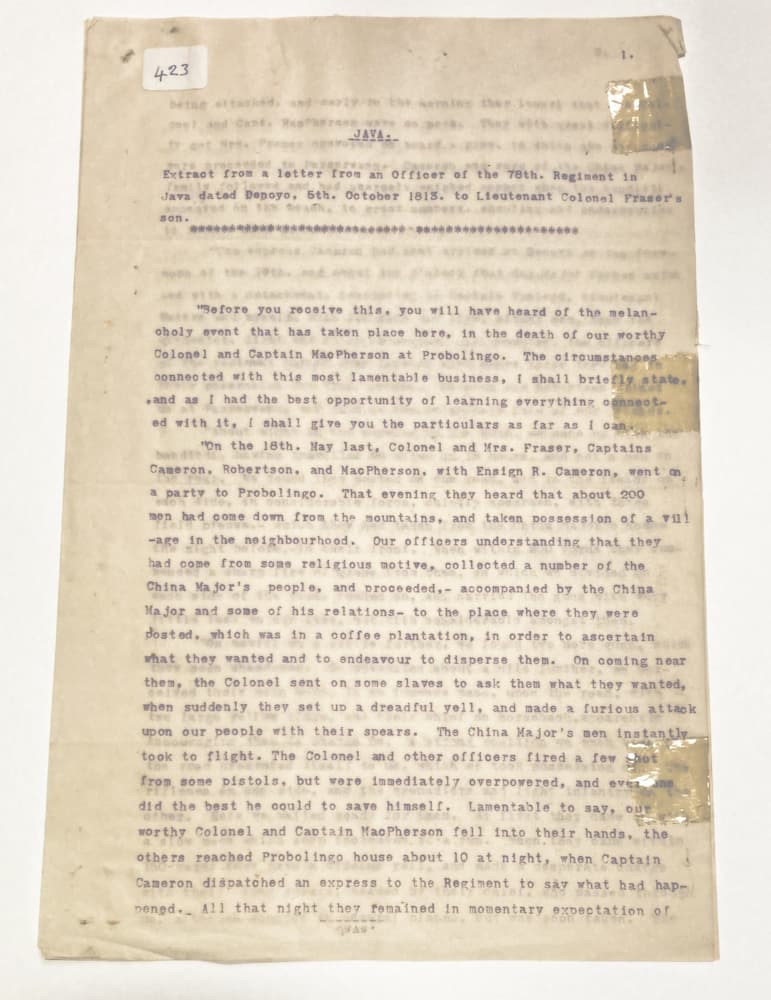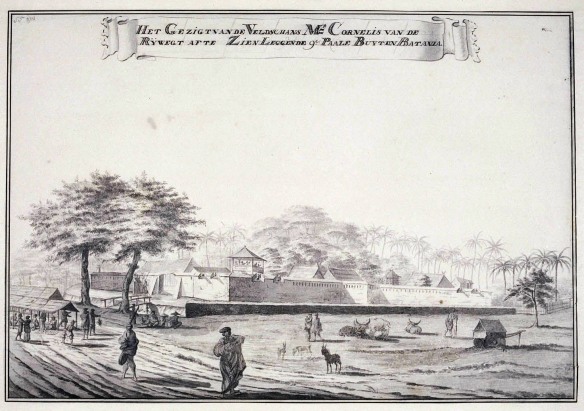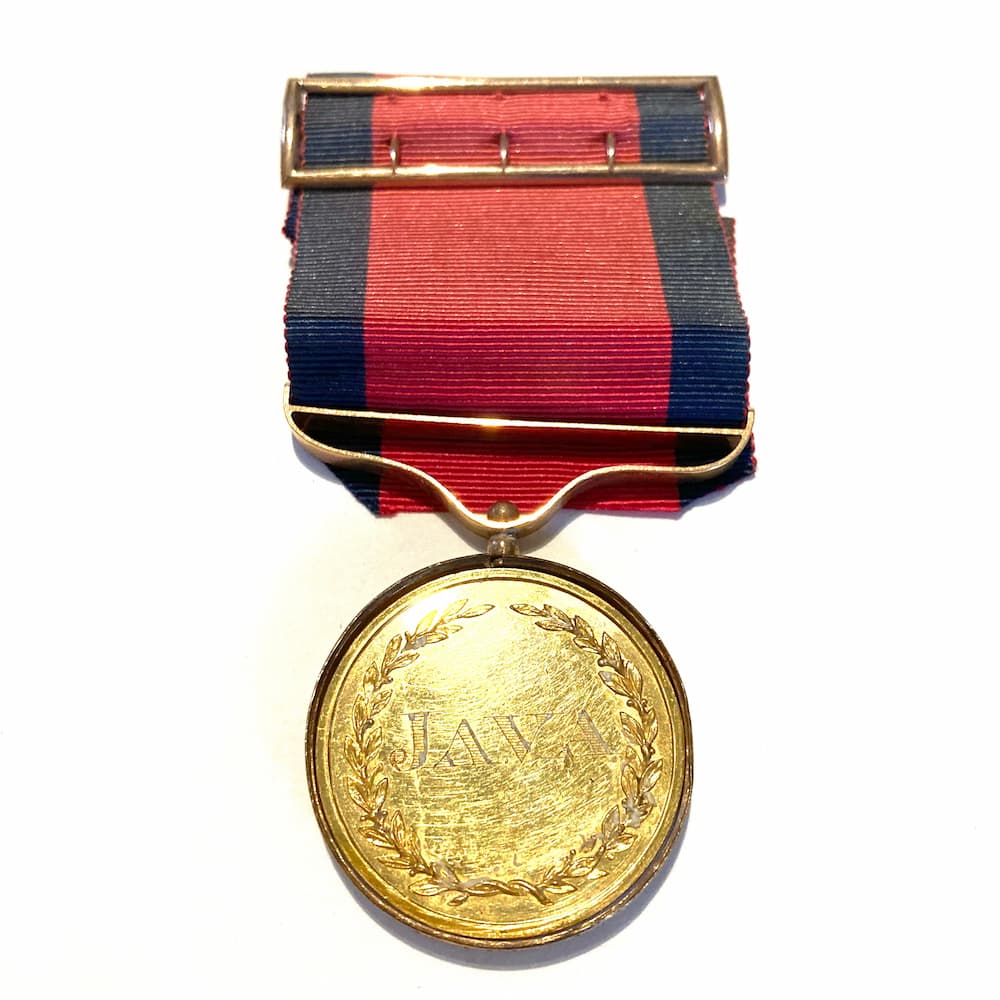THE INVASION OF JAVA
AND THE SHIPWRECK CURSE
The 5th of November 2021 marks 205 years since the wreckage of the Frances Charlotte, one of multiple shipwrecks that occurred as the 78th Highlanders attempted to depart from Java in 1816. This blog post looks at the context and events of the Invasion of Java, and the dramatic attempts to leave the island that resulted in not one, but three shipwrecks…
WHAT WAS THE INVASION OF JAVA?
The Indonesian Island of Java was governed by the pro-French Dutch from 1789 – 1811 (the Netherlands was controlled by the French, making it tricky to differentiate between French and Dutch colonies during this period). At this time, The Dutch were at war with the British, and from 1808, the Dutch Governor in Java began fortifying the island from potential British invasion, building defensive fortifications such as Fort Cornelis (the British had recently captured the French islands of Réunion and Mauritius, and the Dutch East Indian possessions of Ambon and the Molucca Islands, making an invasion seem ever-more likely).
At the suggestion of Stamford Raffles, the British assembled to invade Java in early 1811. The 78th Highlanders, who had been stationed in Bombay, India, sailed for Java in March 1811. With an army of 11,960 men, the British landed twelve miles east of Batavia and defeated the first line of Franco-Dutch troops. Batavia was left undefended, and part of the town had been razed to prevent the British from collecting ‘prize money’.
This letter (which has been transcribed) in the museum collection, dated 5th of October 1813, was written by an Officer of the 78th in Java to the son of Lieutenant Colonel Fraser outlining the details of his father’s death.
Following a British attack on 10th of August (in which 100 British troops and 300 Franco-Dutch troops were lost), the Siege of Fort Cornelis took place. The fort was heavily defended by Dutch, French, and Indonesian troops. The invasion of the fort began on 25th of August at midnight and the Dutch officially surrendered on 18th of September 1811, resulting in Britain seizing control of Java. Total British casualties amassed to 960, with over 1,000 French, Dutch, and Indonesian deaths. Raffles was appointed Governor General of Java.
The Netherlands became independent of France in 1814, and the British subsequently returned the Island to Dutch control. The 78th Highlanders remained in Java for five years after the invasion, supressing Indonesian uprisings and undertaking minor expeditions. One of the legacies of British colonial rule is driving on the left, which is still in place in Indonesia today.
Following a British attack on 10th of August (in which 100 British troops and 300 Franco-Dutch troops were lost), the Siege of Fort Cornelis took place. The fort was heavily defended by Dutch, French, and Indonesian troops. The invasion of the fort began on 25th of August at midnight and the Dutch officially surrendered on 18th of September 1811, resulting in Britain seizing control of Java. Total British casualties amassed to 960, with over 1,000 French, Dutch, and Indonesian deaths. Raffles was appointed Governor General of Java.
The Netherlands became independent of France in 1814, and the British subsequently returned the Island to Dutch control. The 78th Highlanders remained in Java for five years after the invasion, supressing Indonesian uprisings and undertaking minor expeditions. One of the legacies of British colonial rule is driving on the left, which is still in place in Indonesia today.
THE SHIPWRECKS
Owing to their extended stay in Java, the families of the 78th, who had been living in Goa, had relocated to the Indonesian island. When the regiment was ordered to move out, the troops and their families boarded the Princess Charlotte on 18th of September. Just a day later, the ship hit a rock and with great difficulty, returned to Batavia with no casualties.
Eleven days later, they embarked on the Frances Charlotte heading for Kolkata (Calcutta). On 5th of November, the ship collided with a sunken reef. The lifeboats could only carry 150 passengers, leaving hundreds of troops marooned on a rock. The first ship sent to rescue the survivors was, again, wrecked. Four days later, the merchant ship Po managed to rescue only 27 more men, and two rescuers were lost in the process.
Finally, on 10th of November, the merchant ship Prince Blucher saw a signal fire and was drawn to the wreckage. Over the next three days, the Prince Blucher rescued 316 passengers. The Government of Bengal sent a final ship to rescue the remaining survivors who, by this point, had been marooned for 36 days. Some died of starvation shortly after rescue, and some died from over-eating after having been starved for so long. Despite the circumstances, only eighteen people (including the two rescuers) died throughout the whole event.
This Army Gold Medal inscribed with ‘JAVA’, pictured above, was awarded to Lieutenant Colonel David Forbes of the 78th, who survived the multiple wreckages and returned to the UK.



